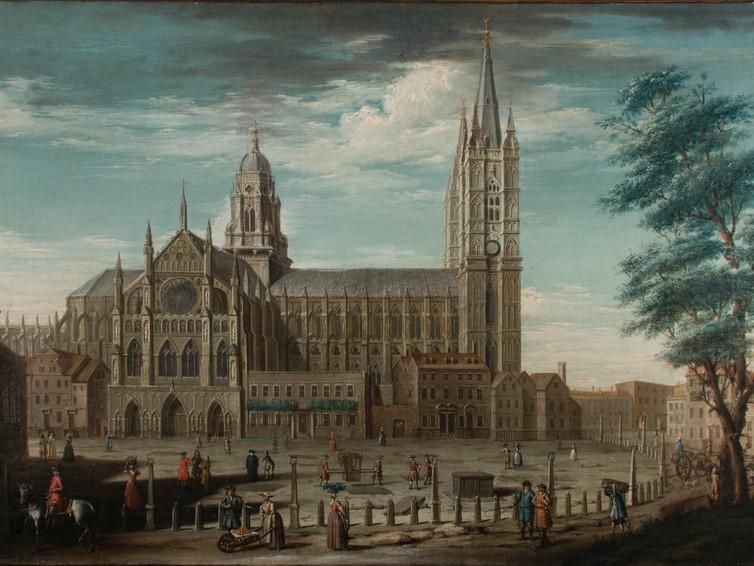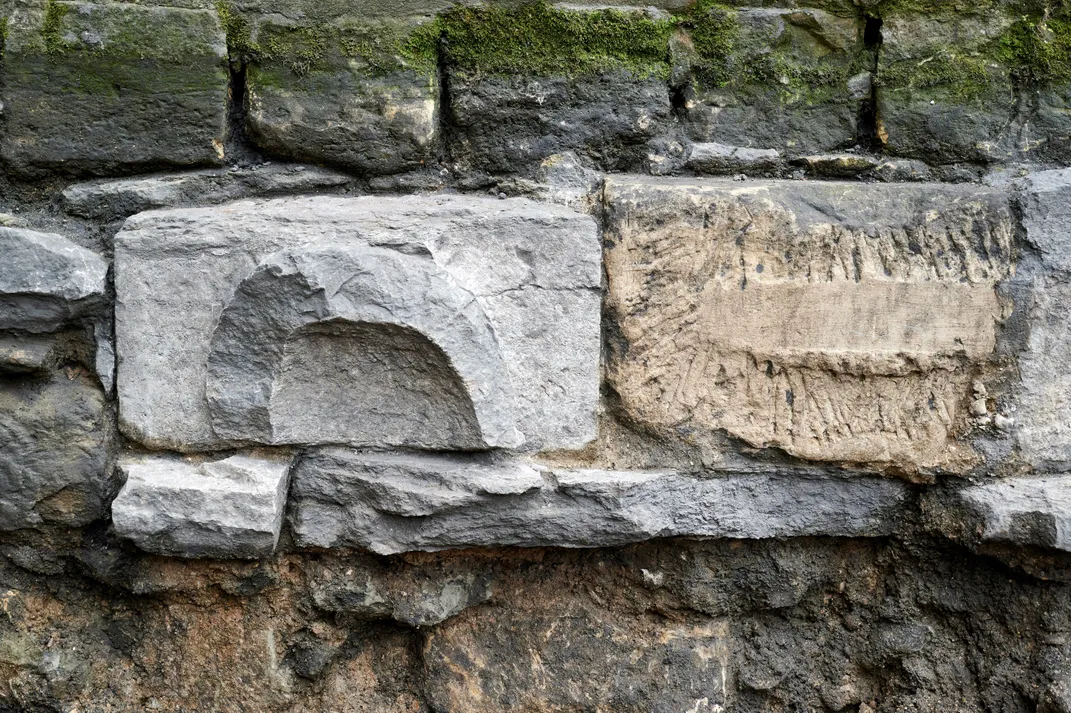Lost Medieval Sacristy, Burial Grounds Unearthed at Westminster Abbey
Demolished in the 1740s, the 13th-century structure once housed the church’s altar linens, chalices and other sacred items
:focal(2688x1638:2689x1639)/https://tf-cmsv2-smithsonianmag-media.s3.amazonaws.com/filer/29/d7/29d76375-c379-4e3c-b431-6f3cefad2d70/l-shaped_foundations_of_the_medieval_great_sacristy_from_the_roof_of_westminster_abbey_picture_by_pre_construct_archaeology.jpg)
Archaeologists in London have discovered the foundations of Westminster Abbey’s medieval-era Great Sacristy, reports Mark Brown for the Guardian.
Built in the 1250s as part of Henry III’s rebuilding efforts, the L-shaped structure housed sacred items, including chalices, altar linens and vestments. Per a statement provided to Smithsonian magazine, medieval clergy members may have also gathered in the sacristy to prepare for processions into the main church.
Henry commissioned the towering cathedral seen today to replace Edward the Confessor’s stone church, which was consecrated on the site in 1065. As Westminster Abbey notes on its website, Henry wanted to replace the 11th-century structure with a Gothic masterpiece that rivaled other churches then appearing across Europe.
“Once an integral part of the Abbey,” the sacristy—demolished in the 1740s after becoming structurally unsound—“is the only part of Henry’s church to have been lost,” according to the statement.
Westminster Abbey recruited experts from Pre-Construct Archaeology to conduct excavations ahead of construction of a new visitor’s center on the landmark’s North Green. The new building will allow visitors to enter the abbey through the Great West Door, which has historically been used only by monarchs and royal brides.
/https://tf-cmsv2-smithsonianmag-media.s3.amazonaws.com/filer/10/52/10526f1e-72a3-4b57-86ee-db9d260ff3d7/11th_century_chalk-lined_grave_with_a_skeleton_likely_to_be_that_of_a_monk_picture_by_westminster_abbey.jpg)
The team found evidence of “hundreds if not thousands” of burials on the property, archaeologist Chris Mayo tells the Guardian.
“You do have to be careful where you’re walking,” he adds. “You can see from the ground there are burials everywhere.”
As Encyclopedia Britannica points out, the land now occupied by the abbey has hosted religious communities for centuries—a fact that likely accounts for the expansive cemetery found by the archaeologists. In 785 A.D., a small community of monks lived in a monastery at the site; some 200 years later, St. Dunstan of Canterbury expanded and remodeled the church, and in the 11th century, Edward constructed an entirely new structure.
One of the monks laid to rest on the abbey’s grounds remains remarkably well preserved. The researchers have now “carefully and temporarily uncovered … his chalk-lined grave,” reports the Guardian.
One of the most intriguing finds was a large stone structure repurposed as part of the 13th-century church’s foundation. Likely used between Edward and Henry’s reigns, the stoup, or basin, held holy water for monks to wash their hands in upon entering the abbey.
Records show that builders added a second floor to the sacristy during the 1380s, when construction work was taking place across the monastic complex. The building was later transformed into a residence.
Per the statement, the archaeologists also discovered fragments of painted wall plaster that might have once adorned the sacristy and a cesspit situated between two nave buttresses. Used as a latrine by residents of nearby townhouses, the pit was filled with everyday objects—including plates, chamber pots, drinking glasses, and a variety of combs and brushes—discarded during the early 1700s.
The razed sacristy was largely forgotten until 1869, when Sir George Gilbert Scott, an architect and the abbey’s surveyor of the fabric, uncovered and recorded its remains for the first time. A Roman sarcophagus excavated during this dig is on display in the Queen’s Diamond Jubilee Galleries.
Interestingly, another medieval sarcophagus unearthed during the more recent excavation proved to be somewhat of a letdown. Though the team speculated that it could contain the remains of a key medieval figure associated with the sacristy, Mayo tells the Guardian that “the individual ha[d] been taken out and the sarcophagus … reused as a drain.”
He concludes, “It does take some of the gloss off.”


/https://tf-cmsv2-smithsonianmag-media.s3.amazonaws.com/filer/32/bd/32bd4c1f-43cc-40b4-8abf-11d1b916e21a/archaeologists_from_pca_working_on_the_great_sacristy_site.jpg)